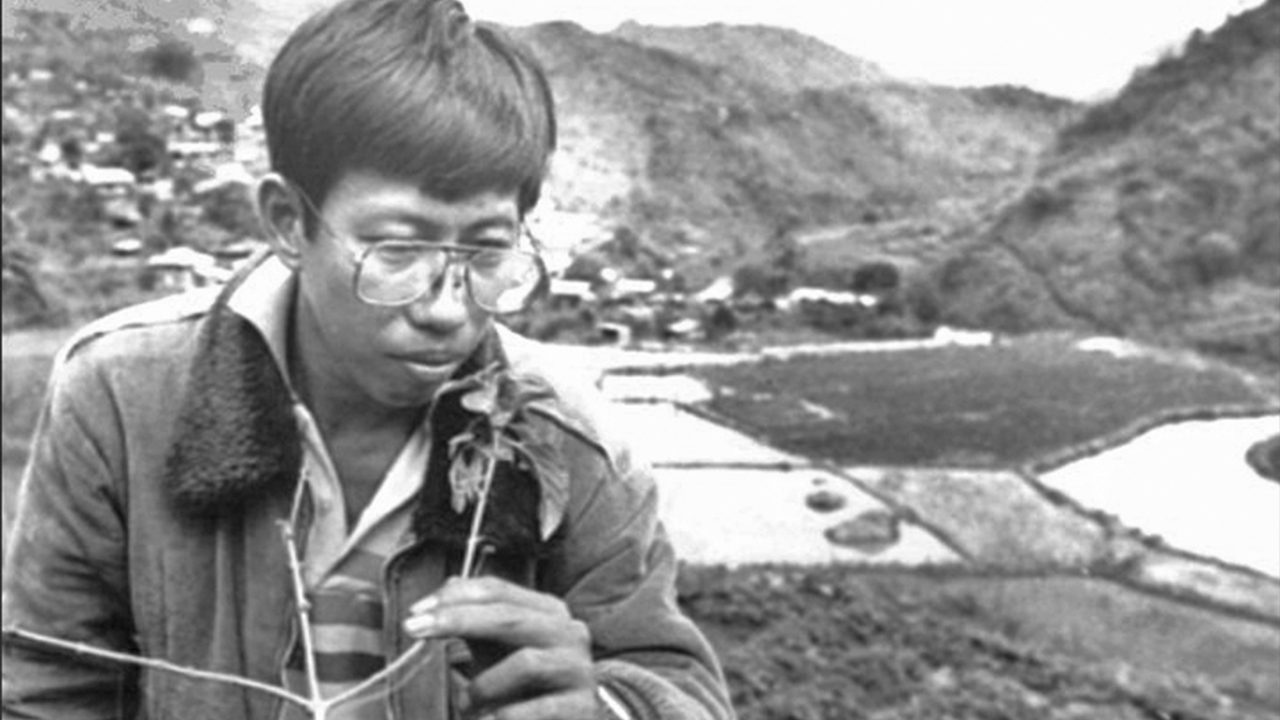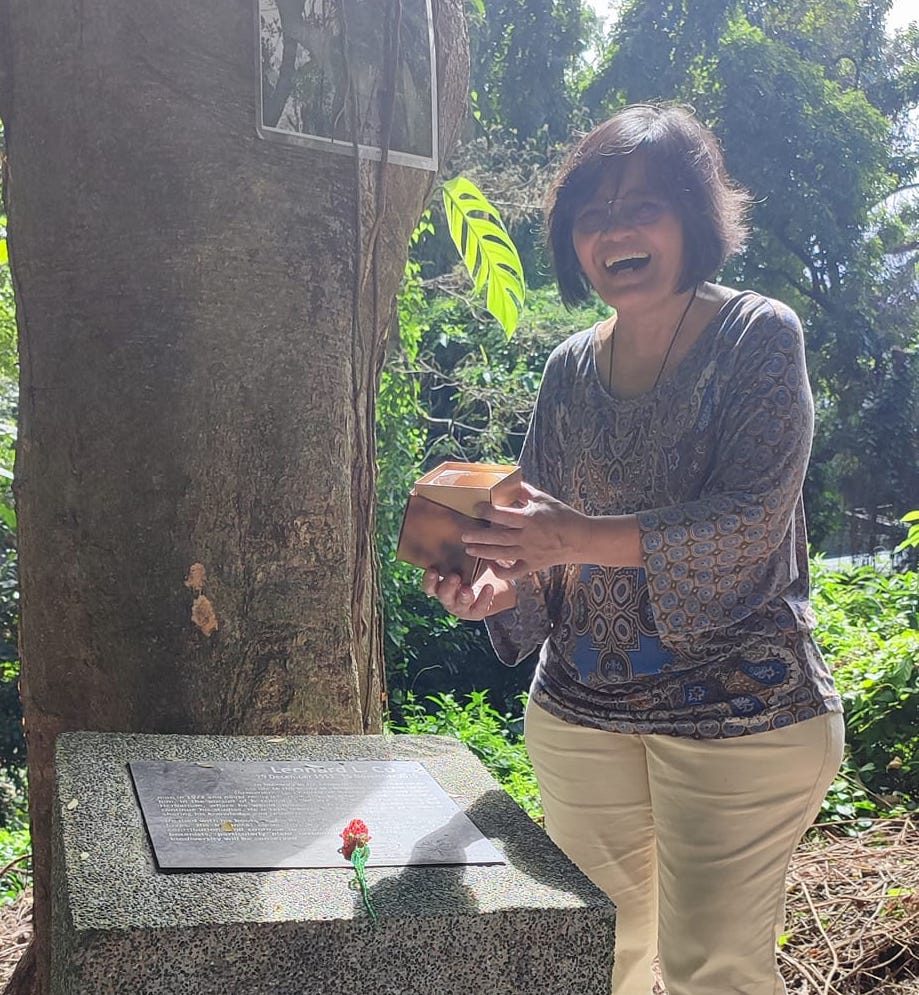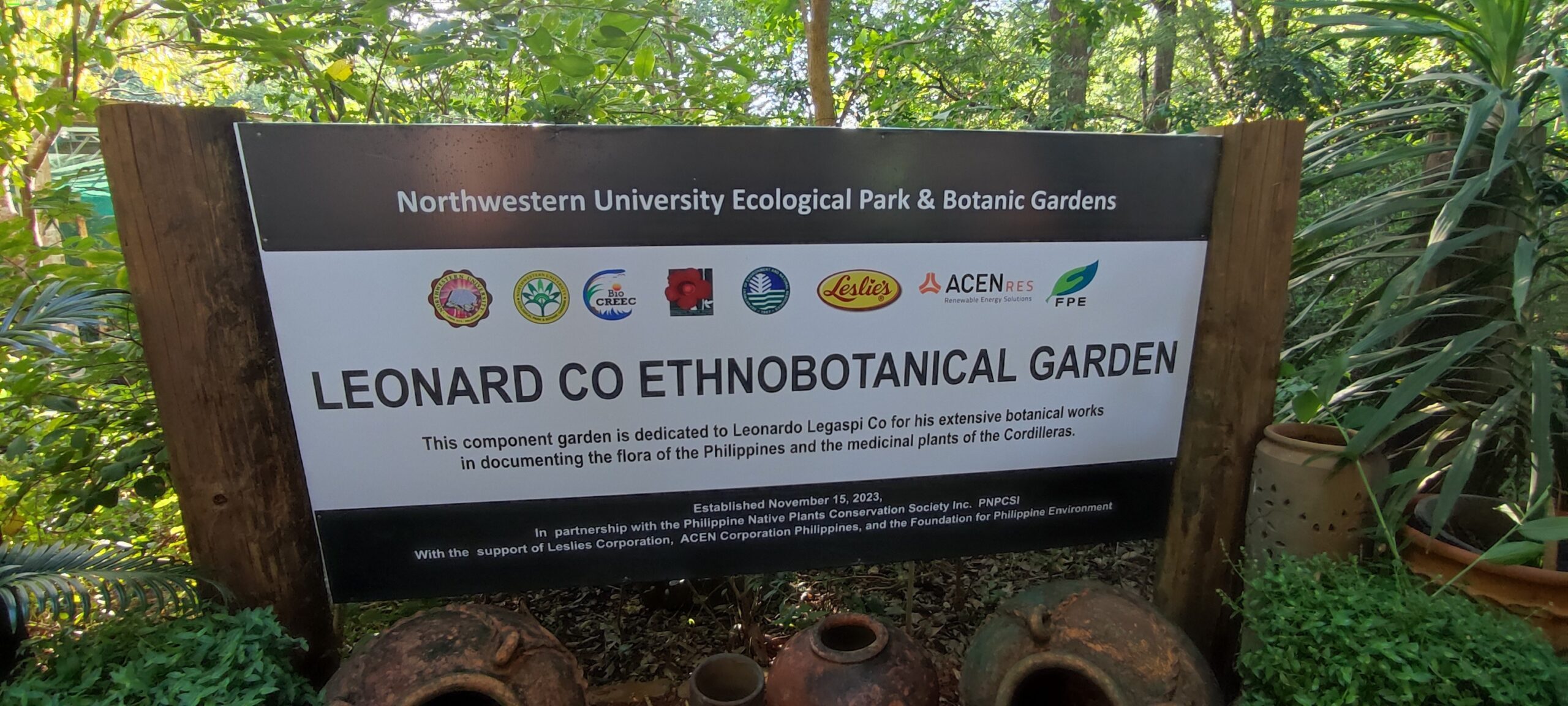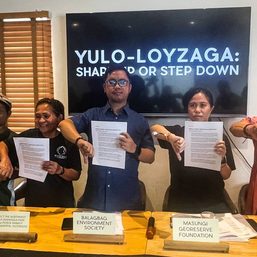SUMMARY
This is AI generated summarization, which may have errors. For context, always refer to the full article.

MANILA, Philippines – 13 years after the killing of renowned Filipino botanist Leonard Co, his family and supporters are unwavering in their pursuit of justice.
Co was on field work studying the native trees in a forest in Kananga, Leyte when soldiers mistook him and his two aides as members of the New People’s Army. The soldiers fired 245 rounds.
It has since been a long-winded battle for Leonard’s family that the case ceased to be a problem confined to the family. As years passed, it has turned into an advocacy.
And for Glenda Co, widow of the late scientist, this coming together was what sustained her for more than a decade.
“Siguro ‘yung support din ng mga tao,” Glenda told Rappler on Tuesday, November 14, a day before the 13th death anniversary of her late husband. “Hindi ko na kasi ‘to laban, parang laban na ‘to ng lahat.”
(Maybe because of other people’s support too. This is not solely my fight anymore, this is everybody’s fight.)
But this long-drawn-out case should be a lesson too for the military, said Glenda. So they don’t just kill and kill, shoot and shoot.
On the day before the death anniversary, Glenda and her family attended a Holy Mass inside the University of the Philippines (UP) Diliman. During the 70s in UP Diliman, Leonard studied botany and joined a mountaineering organization.
Every year, family, friends, and supporters gather around a Dita tree inside the campus where a memorial plaque for Leonard was installed. Some of his ashes were buried there.
Some groups joined Glenda’s family during the Mass on November 14. These are human rights organizations Karapatan and Hustisya, and science and technology advocates from Agham.

Glenda knows resolution to the case, while in sight, is still far. The most recent hearing she attended in Kananga was last November 8, where the sketcher who drew the location where Leonard was shot testified. She said their evidence was already laid out, many had testified. The legal journey has been rote.
“Ayoko kasing namatay ng ganoon na lamang,” said Glenda. “Tuloy-tuloy lang ‘yung laban. Hindi ko na napansin na umabot na ng 13 years.”
(I don’t like the idea that he was just killed. The fight continues. I didn’t even realize it had been 13 years.)
In 2012, the Commission on Human Rights filed charges against nine soldiers and two commanders of the 19th Infantry Battalion.
In a resolution that same year but promulgated in February 2013, the Department of Justice (DOJ) found probably cause to charge the soldiers for the crime of reckless imprudence resulting in multiple homicide and attempted homicide. Glenda’s family had been pushing the DOJ to upgrade the charges to murder but to no avail.
A passionate scientist, observer
When he was still alive, Leonard would spend most of his time in the forests of Palanan, Isabela. There he conducted most of his field work.
It was in Glenda’s first – and what she swore to be her last – visit to Palanan that she realized she married a man married to his work.
Glenda recounted to Rappler the time when they were supposed to celebrate their second wedding anniversary in 1992 and Leonard could not leave Palanan because of a deluge of work.
He had Glenda come over. She obliged. It was one of the most frightful trips she had. “Akala ko babagsak ‘yung eroplano.” (I thought the airplane would crash.)
When she got to Palanan, Glenda was irritated when she found someone else was waiting for her instead of Leonard. But when she found him in his office, literally swamped with samples of specimens, her heart warmed.
“Talagang punong-puno ‘yung buong room ng specimens,” she laughed. “Hindi talaga siya makakauwi. Talagang ito ‘yung tao na mas minahal ‘yung trabaho kesa sa napangasawa.”
(The room was full of specimens. He would never have made it home. This is the person who loved his work more than he loved the one he married.)

Aside from what can be seen on the earth, Leonard was also interested in what one can see in the heavens. Glenda recalled a time together at the beach. Leonard kept pointing at the night sky, naming constellations he could recognize.
She described him as a genius. “Amazed talaga ako.” (I was amazed.)
But it wasn’t just science that Leonard was passionate about. He was also a staunch environmentalist, said Glenda.
The 1991 Ormoc flash flood that killed thousands inspired anger from the botanist. Leonard had told Glenda there would be many more killed, more disasters, if people would continue damaging the environment.
So when Super Typhoon Yolanda struck Eastern Visayas in 2013, Glenda would remember her husband and his repetitive warnings.
Legacy
To honor his contribution to Philippine botany, the Leonard Co Ethnobotanical Garden was inaugurated on Wednesday, November 15 – exactly 13 years after he was killed – at the Northwestern University in Laoag City.
It was a sunny day. Scientists, students, and university officials attended the event. Glenda, their daughter Linnaea Marie, and Leonard’s sister, were there too.

In 2011, Glenda had to go back to Palanan despite swearing before that she would not go back. Leonard’s wish was that when he died, some of his ashes would be scattered in Palanan.
She was taken by surprise by the amount of support they got when they visited Palanan to scatter his ashes.
“Talagang ma-to-touch ka,” said Glenda. “Noong nagsabog kami ng ashes doon, buong Palanan ang umakyat para sumama sa amin.”
(You would be touched. When we went there to scatter ashes, the whole community of Palanan climbed the mountain to be with us.)
Leonard’s legacy – fueled by his contribution to Philippine botany and the circumstances of his death – might just outlive delayed justice. Like the forests a new generation of environmentalists fight tooth and nail to protect, and the skies he had observed from a distance. – Rappler.com
Add a comment
How does this make you feel?










There are no comments yet. Add your comment to start the conversation.